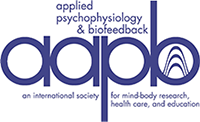LORETA Neurofeedback Combined with Biofeedback as a Treatment for Agenesis of the Corpus Callosum: A Single Case Study
Agenesis of the corpus callosum (AgCC) is a congenital disorder that leads to a broad array of symptoms including cognitive, motor, and social difficulties. Parents of children with AgCC are faced with few treatment options for this often debilitating disorder. There is also a lack of research concerning how to help children and adults with AgCC achieve improved levels of functioning. This paper discusses the utility of low resolution brain electromagnetic tomography (LORETA) Z-score based neurofeedback combined with heart rate variability (HRV) training biofeedback in treating a young man with partial and congenital AgCC. The comprehensive assessment process included analysis of 19-channel quantitative-EEG (QEEG) and HRV data in combination with parent rating questionnaires, and continuous performance test measures: Integrated Visual and Auditory Continuous Performance Test (Arble, Kuentzel & Burnett, 2014) and the Test of Variables of Attention (Forbes 1998). This article illustrates amelioration of cognitive, motor, social, and sleep-based symptoms in this case, suggesting neurofeedback and biofeedback have a positive role to play in helping people with AgCC.

Scores on the IVA test are standard scores with a mean of 100 and a standard deviation of 15. Higher scores indicate better performance Initially, B's response control quotient (RQ), was at 73, indicating that there was a significant degree of impulsive responding (hitting for the number 2 and not just the number 1). After training, the score rose to 86, which is just within 1 SD of the mean. His attention quotient (AQ) was at 49, indicating issues with maintaining attention. After training this increased to 56 indicating fewer instances of missing targets.

On the TOVA, scores are standard scores with a mean of 100 and a standard deviation of 15. B's results on the TOVA improved across all dimensions. First, he increased his ability to respond consistently with his response time variability (RV) increasing from 73 to 86. This indicates a reduction in drifting attention. His score for response time (RT) also increased, from 120 to 130, indicating a fast response time (90th percentile rank) got even faster (98th percentile rank). His score for commission errors improved from 60 to 79, while his omission errors went from 40 to 94, putting him within the average range for attention on the TOVA. Scores indicated a significant improvement in both impulse control and ability to pay attention.

HRV statistics. The measure of the total power of his HRV increased significantly from 1632 to 3906, indicating healthier heart function. Finally, his low frequency power increased from 662 to 1384.

B initially started treatment with an SDNN of 61. After training this increased to 94. Scores above 75 are in the healthy range for young adults and this change indicates that his HRV had increased significantly.

Pre- and post- 58 sessions: 19-channel EEG maps. The above EEGs were recorded pretraining and again after 58 sessions of LORETA neurofeedback combined with HRV training. Improvements in alpha amplitude, alpha phase, and beta coherence and phase were noted. Relative power of frontal theta and relative power of posterior delta also improved with training. The relative increase in frontal beta may represent a compensatory mechanism related to the improvement in motor coordination since it is in the premotor area of the cortex.

Summary of pre–post assessment questionnaires. This figure shows the pre and post changes in questionnaires designed to rate symptoms of ADHD. Questionnaires were completed by B's mother. These questionnaires include the ADD-Q, the DSM-IV ADHD questionnaire, as well as the Conner's ADHD questionnaire. Lower scores on these questionnaires indicate fewer symptoms related to ADHD including inattention, impulse control, drifting attention, and hyperactivity.

Shane Dutt

Andrea Reid-Chung

Lynda Thompson

Michael Thompson

Eunha Lee
Contributor Notes
